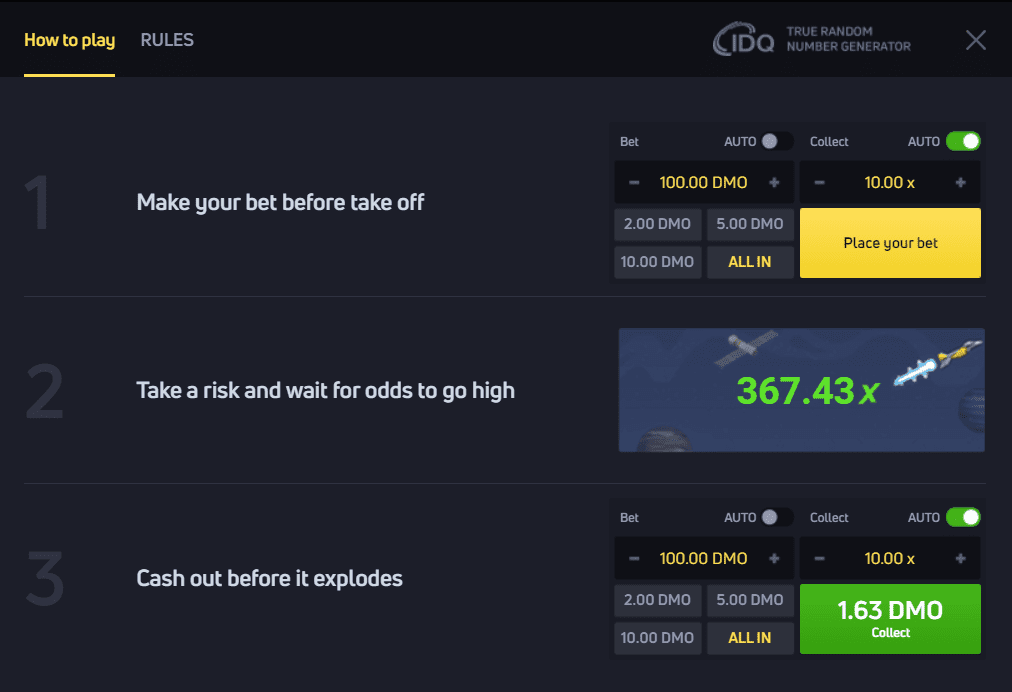Wow — fraud and fake accounts keep tripping operators up, and the easiest way to lose money is to have weak onboarding. This guide gives hands-on checks, small-case examples, and a checklist you can apply today to tighten KYC and verification without killing conversion. Read on for concrete tactics that balance customer experience and risk control.
First, a quick primer: fraud detection is not a single technology but a layered program combining identity verification, device and behavioral analytics, transaction monitoring, and manual review. Each layer catches different attack vectors, so you must design them to hand off suspicious cases smoothly rather than treating them in isolation. Below I break down each layer and how to tune it for gaming products operating with crypto and fiat, with Australian regulatory sensitivity in mind.

Layer 1 — Identity Proofing: Document & Biometric Flows
Hold on — many teams assume OCR alone is enough, but OCR can be spoofed with a good printout, so don’t rely on it by itself. Use a multi-step identity flow: automatic OCR extraction, active liveness (selfie with motion), and data cross-checks against name/address registries where permissible. This reduces false negatives and will catch the most obvious synthetic IDs.
Design tip: keep the first screen simple (name, DOB), then progressively request documents only when risk signals rise. That avoids scaring off genuine customers and preserves conversion. Next we’ll look at device and network signals that often reveal fraud before documents are requested.
Layer 2 — Device, Network & Fraud Signals
Here’s the thing — a lot of fraud is visible before account creation if you inspect device fingerprints, IP anomalies, and browser quirks. Collect non-invasive device telemetry (fingerprint hash, timezone, canvas or WebGL inconsistencies) and compare to IP geolocation and anonymizer lists. If timezone and IP country mismatch, flag for soft KYC rather than immediate denial to avoid blocking travellers.
These signals should feed a scoring engine that decides whether to prompt step-up verification, apply temporary limits, or allow instant play. We’ll cover scoring thresholds in the scoring section below so you can calibrate for your risk appetite.
Layer 3 — Behavioral & Transaction Monitoring
My gut says behavioral monitoring is underused, and that’s true — patterns like impossible session velocity, identical bet sizing across multiple accounts, or repeated small deposits followed by a big withdrawal are classic red flags. Implement real-time analytics to monitor velocity (actions/minute), bet uniformity, and deposit/withdrawal patterns.
These behaviors should be tied into automated rules and to a case management queue for human review so that suspicious patterns lead to proportionate responses rather than blunt account freezes that alienate legitimate customers.
Risk Scoring & Response Matrix (mini-case)
At first I thought one score was enough, then I realized you need multiple parallel scores: identity confidence, device risk, transactional anomaly, and deposit source risk. Combine them into a normalized risk score and map that to responses — e.g., score 0–30: instant play; 31–60: step-up KYC; 61–85: limits + manual review; 86–100: block and escalate. This keeps friction lowest for good users and escalation obvious for outliers.
Below is a short comparison of verification approaches to help choose tools before we place contextual recommendations.
| Approach | Strengths | Weaknesses | Best for |
|---|---|---|---|
| Basic OCR + DB checks | Cheap, fast | Low spoof resistance | Low-risk markets |
| OCR + Liveness + AML watchlists | High assurance | Higher friction | Crypto withdrawals, high-value users |
| Behavioral analytics + device fingerprinting | Low friction, pre-emptive detection | Requires model tuning | Gaming operators with heavy traffic |
Where to put your “golden middle” link and platform resources
If you want a practical comparison between crypto-first platforms and hybrid operators, a good walkthrough and checklist can be found here, which is useful to review before finalizing your payment/withdrawal policies. Reviewing similar operator docs helps you align KYC thresholds with payment rails and player lifetime value assumptions.
KYC Workflow Best Practices (step-by-step)
To be honest, operators trip up on three routine mistakes: too much friction at onboarding, inconsistent escalation rules, and weak audit trails. Start with a simple baseline KYC: name, DOB, email, phone verification via OTP. If risk score rises, request ID and selfie. If further risk persists, request proof of address and payment source documents. This staged approach preserves signup flow for the majority while ensuring high assurance for the few that need it.
Remember to log every user touch with timestamped evidence; the audit trail matters for disputes and regulator queries, especially in Australia where banks and local authorities may request records during AML reviews.
Payments & Withdrawals: AML and Source-of-Funds Checks
Quick checklist: screen deposits against sanction lists, require cold-wallet confirmations for large crypto deposits, and enforce a withdrawal cooling-off for new payment methods. If a player deposits via a third-party instant buy (card-to-crypto), verify transaction IDs or on-ramp receipts before allowing high-value withdrawals. These steps reduce duplicate-account laundering and rapid cash-outs, and they prepare you for AML filings if needed.
After payments, you should re-check risk signals and escalate when players try to route funds to different chains or networks suspiciously fast.
Common Mistakes and How to Avoid Them
Here are the practical stumbles teams make and direct fixes you can implement immediately.
- Assume one-size-fits-all KYC — segment by risk and product instead, so low-stake poker rooms have lighter flows than VIP withdrawals.
- Trust device fingerprints alone — combine with IP reputation and liveness to reduce false acceptance.
- Manual reviews without queues — implement SLA-based triage so urgent cases don’t languish and frustrate players.
These fixes reduce false positives and improve player trust while keeping fraud low, and the next section gives an exact checklist for rollout.
Quick Checklist — Operational Rollout (copyable)
Use this checklist to stand up or audit a verification program in 30 days.
- Map player journeys and identify where to capture device and network signals (signup, first deposit, withdrawal).
- Implement staged KYC: email/phone → ID+Liveness → proof of address/payment docs.
- Deploy behavioral analytics and set velocity rules (bets/sec, deposits/day).
- Create a risk score matrix and tie actions (limits, step-up, block) to score bands.
- Log all evidence into an immutable case management system for audits and appeals.
- Train support to explain verification steps clearly and politely, and set response SLAs (24–72 hrs depending on severity).
Apply this checklist, then measure the conversion delta and fraud reduction to iterate the thresholds responsively as you collect more signal.
Mini-FAQ
Do I need full KYC for small deposits?
Not necessarily — for low-risk micro-stakes you can allow limited play after basic verification and escalate only on withdrawal attempts or on anomalous behavior, which helps conversion while controlling risk.
How fast should verification decisions be?
Automated checks should be real-time (<60s). Manual reviews should aim for 24–72 hours depending on local staffing and the amount involved; communicate expected SLAs to players to reduce friction.
What about privacy laws in Australia?
Collect the minimum personal data required, store it securely, and be ready to support data subject requests per the Privacy Act — this reduces regulatory risk and builds player trust.
After you’ve implemented these, tune your scoring and consider vendor comparisons to replace legacy tools if needed, as I outline next.
Vendor Choices & Comparative Notes
Choosing vendors depends on volume, crypto exposure, and budget. For high-volume poker venues, prioritize low-latency device and behavioral analytics. For crypto-first ops, choose ID providers that validate blockchain transaction proofs and accept multi-network receipts. For a starting place to compare product features and playbooks, see a practical operator review here which highlights crypto banking and verification workflows; use it as a model when aligning KYC thresholds with treasury policies.
Simple Example: Two Hypothetical Cases
Case A — New user deposits 0.05 BTC within 5 minutes of account creation: device is new, IP matches Tor exit node, and liveness check fails. Response: require ID+Liveness and set a 24-hour withdrawal hold. This prevents immediate cash-out while enabling legitimate users to verify quickly.
Case B — Long-standing player with normal bet patterns requests a large withdrawal to a new wallet: device and IP match historical data but destination wallet has no prior history. Response: soft step-up — request a short on-ramp proof (exchange tx ID) and allow a staged payout after validation to reduce friction for loyal users.
These cases show how proportional responses preserve player experience while stopping most fraud, and the final section covers regulatory and responsible gaming notes you must not skip.
18+ Responsible gaming note: verify customers’ age and identity rigorously and include self-exclusion options; for Australian operators, comply with AML/CTF obligations and local state rules on online gambling, and provide links to support services if players need help.
Sources
- AML/CTF guidance — AU government publications (searchable public guidance)
- Operator case studies and best-practice playbooks from industry vendors and regulator summaries
About the Author
Sam Ellis — payments & fraud practitioner with 8+ years advising online gaming operators in ANZ. Experience spans KYC program design, vendor selection, and AML escalation playbooks; writes practical, operator-focused guides. Contact for consultancy and audits, and always test decisions in a staging environment before production rollout.









